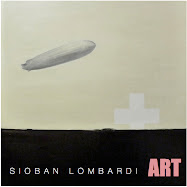
The twentieth-century artist who uses symbols is alienated because the system of symbols is a private one. After you have dealt with the symbols you are still private, you are still lonely, because you are not sure anyone will understand it except yourself. The ransom of privacy is that you are alone.
(Louise Bourgeois (b. 1911), U.S. sculptor. As quoted in Lives and Works, by Lynn F. Miller and Sally S. Swenson (1981).)
I recently viewed the film Louise Bourgeois: The Spider, the Mistress and the Tangerine. The film was a thought provoking examination of the life and work of the 97-year-old artist, who continues to inspire artists and feminists, despite her own existence within and separate from almost every art movement since the mid-twentieth century. Knowledge about the work and practice of any such artist often prompts me to reexamine my own approach.
The Oxford English Dictionary defines a symbol as a thing that represents or stands for something else, especially a material object representing something abstract. I have always incorporated symbols in my work. Those used are highly personal, persistent images the reoccur in my conscious and to which I assign meaning. Thus, my paintings reflect an attempt to visually organize thought using personal symbol and reference. It is through a visual vernacular that I discern, understand and communicate.
What I have only recently begun to understand is why I articulate them void of narrative or environment. I am a firm believer that we cannot escape the history in which we exist. Thus I returned to the visual source material I encountered as a child in the 1960’s and 1970’s, and that continues to attract my attention – print advertisement.
It is clear to me that I respond to any visual media that conveys meaning with a minimum of descriptive text. My mother, who is also responsible for any creative genetics I have inherited, was a magazine hoarder. I was a loner who spent long hours paging though magazines, returning over and over again to images that attracted me. Acting on this theory, I began investigating print advertisements of the aforementioned period. What I discovered seemed to confirm my theory and startled me with its precision.
Above, I have taken two print advertisements from the 1960’s, removed the text and compared them to my painting Toy Plane, Oil on Linen, 2007. While I have no recollection of these images, the visual relationship seems significant.
There are two things I have learned from this. I can confirm, at least for myself, that early visual information continues to inform my work. In addition, and most important, is the fact that the dialogues, real or fictional, I have with other artists, and the investigations they provoke, are clearly the impetus for a heightened awareness of my practice. I remain grateful for these conversations. Incidentally, if you have not already seen this film, I highly recommend it. The scene discussing her father and the tangerine will rip your heart out. Ms. Bourgeois is clearly a force of nature.



No comments:
Post a Comment